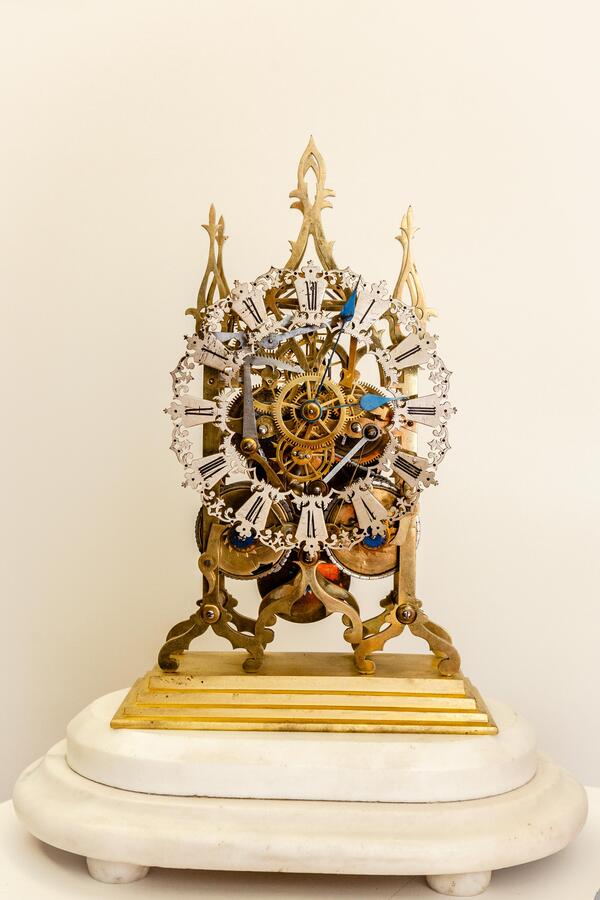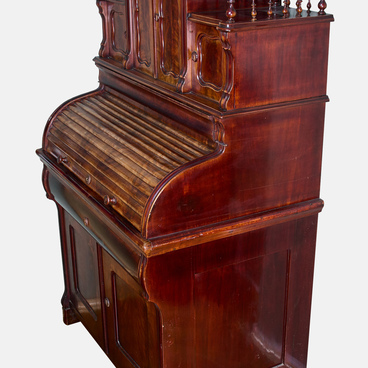Alexander Goldenweiser was born into the family of a barrister in Chisinau on March 10, 1875. On this auspicious occasion, his father Boris Solomonovich presented his wife Varvara Petrovna with a skeleton clock.
A skeleton clock is a clock in which the moving parts of the mechanism are completely or partially visible: all non-essential metal is removed, leaving only the lightweight frame required for functionality. The term “skeleton” comes from the Ancient Greek word, meaning “dried up”. The history of skeleton clocks begins almost simultaneously with the advent of mechanical clocks. The masters of the past were sometimes unable to put the entire mechanism into the case and had to leave part of it open.
Skeleton clocks became widespread in the 16th century, during the Reformation in Switzerland. John Calvin, the leader of the Reformation movement, banned entertainment and the wearing of jewelry. To avoid bankruptcy, the jewelers had to be resourceful. They teamed up with clockmakers and together they began to create real works of art. During the Reformation clocks were not banned, so many Europeans, who were accustomed to luxury, began to acquire lots of these objects, contributing to the wide distribution of skeleton clocks. The craftsmen sought to impress the imagination of the buyers, so they decorated clocks with precious metals, engraving, enamel, and carving. A skeleton clock became an object that was meant to be a constant surprise.
The process of making a skeleton clock is very complicated. Craftsmen must whittle down all excess metal, sometimes reducing the mechanism mass by up to 70%, leaving only the frame — the skeleton of the mechanism. This stage is called lacing. At the same time, the clockmaker must maintain a perfect balance, otherwise excessive reduction can lead to the disruption of the mechanism. The lacing is followed by the finishing stage, which includes grinding, polishing, and decorating the smallest details of the mechanism. Skeleton clocks fascinate with their mysterious mechanism, which is open to its owner’s view. You can watch the progress of the timepiece without any obstacles and secrets.





